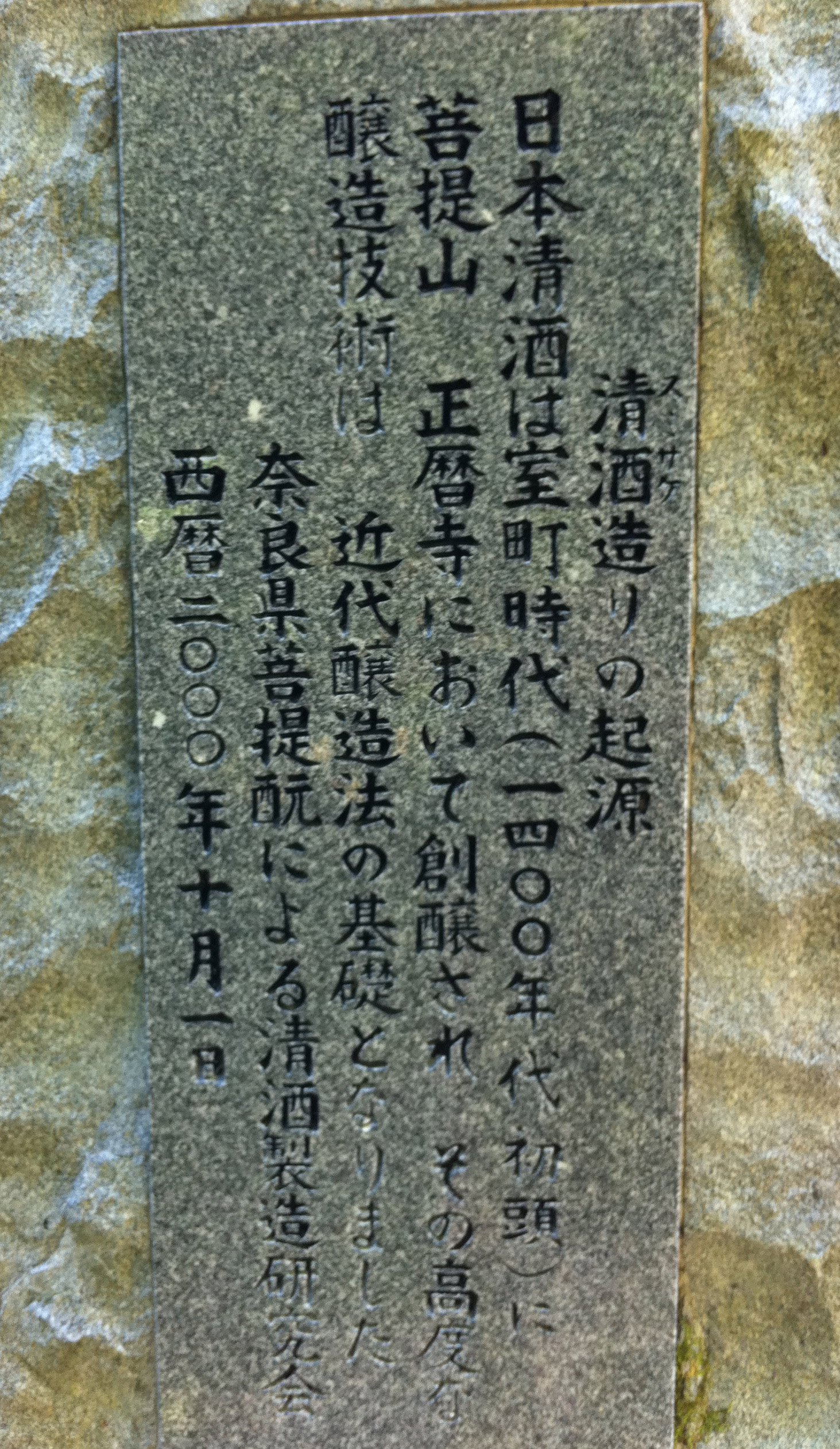History of Temple Brewing
Sake. The national drink of Japan made from rice. At one point in its history, Japanese sake was brewed in temples. In medieval Nara, as recorded in the "Tamonin Nikki" (Diary of Tamonin) and the “Kyokaku Shiyosho” (diary of the priest Kyokaku) of Kofuku-ji Temple, large temples built by the state were responsible for temple brewing. Meanwhile, during this same period, overseas, wine, beer, champagne and other fermented beverages brewed in medieval abbeys and monasteries witnessed dramatic improvements in quality.
Why then did temple brewing in Japan, which had also spread so rapidly once upon a time, undergo a decline thereafter? Here we seek to answer this question as we unravel the history of temple brewing in Japan.
In Buddhism, there is a precept called “fuonjukai” which could be translated as “nonconsumption of alcohol”. By our modern standards, we may interpret this to mean that Buddhist monks were prohibited from consuming alcohol. Naturally then, the idea that they may have brewed alcohol in temples seems to be implausible. However, according to historical records, not only was sake brewed in the temples of medieval Japan but the sake was actually made for sale.
The large temples of Nara such as Kofuku-ji, Todai-ji and Shoryaku-ji were constructed by the state in the Nara and Heian periods and for a long time served as educational and political institutions. During the Muromachi and Sengoku periods, after the Ōnin War, the country was thrown into disarray and Sengoku daimyo (feudal rulers) suddenly rose to power in various locations, each establishing an independent state. It is thought that this prevented the imperial court and shogunate from being able to secure sufficient funds. During this time many aristocrats found their private estates facing financial difficulties and themselves in financial ruin.
The situation was no different even for large temples and they found that they could no longer depend on the imperial court or shogunate for financial resources. While, initially, they could maintain the temple and its estates with such means as taxes paid in rice, distributing assignments and branch temples, with the gradual transition to a money economy, these temples had to take new measures to acquire funds. One measure that was taken by such temples was the production of sake for sale. No longer able to rely on public funding, national temples faced the need to secure monetary income if they were to continue engaging in the same activities as before.
The “Goshu no Nikki”, said to be Japan’s first technical book on sake brewing written by ordinary citizens, contains descriptions of how to make sake known as “Amano Sake” and “Bodaisen”, which were made using temple brewing techniques. Such sakes made in temples are known collectively as “souboushu”. According to written records, two of the leading figures of the period Oda Nobunaga and Toyotomi Hideyoshi commended souboushu and during the Sengoku period it became widely known as Nara sake.
However, with the establishment of the Tokugawa shogunate in the 1600s so began the political process of curtailing the power of the large medieval temples. Having had much of their “kokudaka” reduced (land confiscated), it became difficult for the large temples to continue making souboushu, and thereafter they fell into rapid decline.
Even after the decline of temple brewing though, it was written of Nara sake that “the Nara style should be considered the roots of sake brewing” in the “Domoshuzoki” (a technical book on sake brewing written in Konoike, Itami). This suggests that the techniques employed had gained a certain level of recognition.

Translation of engraved text in photo:
Origins of refined sake brewing
Japanese refined sake was first made in the Muromachi period (early 1400s) at Bodaisan Shoryaku-ji Temple.
The advanced brewing techniques employed form the underpinnings of modern sake brewing methods.
Naraken Bodaimoto ni yoru Seishu Seizou Kenkyukai
(which translates as Bodaimoto-focused Refined Sake Production Research Group of Nara Prefecture)
1st October 2000